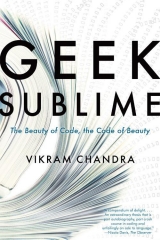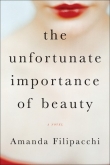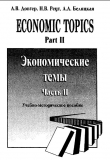
Текст книги "Geek Sublime: The Beauty of Code, the Code of Beauty"
Автор книги: Vikram Chandra
Жанры:
Современная проза
,сообщить о нарушении
Текущая страница: 12 (всего у книги 15 страниц)
In a sustained act of attention, the sahrdayaabsorbs the foreign substance of another’s language into her body, mind, and spirit; the form of the language and the sphota, the explosion of its meaning, take shape within her single-pointed concentration and the heat of her imagination; the dhvanior reverberation of this encounter causes an instantaneous, infinite cognition of memory-elements that dissolve into the story or poem, bringing it to life. This melting of the heart is a transfiguration which deploys the body and desire and mind: both the sahrydayaand the Tantric cry out, camatkara, camatkara!And both, if they practice enough, risk enough, will experience an expansion of the imagination and thus be transformed by this praxis of pleasure.
Is the writer then a kind of entry-level yogi, engaging in a daily practice that mingles asceticism, dangerous mental disciplines, multifarious cognitive states, suffering and joy? There have been many figurings of the artist in recent history: Romantic seeker-explorer, drunken hedonist, bohemian outcast, manic depressive, social reformer, truth teller, tortured confessor of secrets. Perhaps it would be apposite to set next to these a portrait offered by Madhuraja, Abhinavagupta’s contemporary and student:
[Abhinavagupta] sits in the middle of a garden of grapes, inside a pavilion made of crystal and filled with beautiful paintings. The room smells wonderful because of flower garlands, incense-sticks and (oil-) lamps … The room is constantly resounding with musical instruments, with songs and with dancing … Abhinavagupta is attended by all his numerous students, with Kṣemaraja at their head, who are writing down everything he says. To his side stand two women, partners in Tantric rites ( dūtī), who hold in one hand a jug of wine, śivaraasa, and a box full of betel rolls, and in the other hand a lotus and a citron. Abhinavagupta has his eyes trembling in ecstasy. In the middle of his forehead is a conspicuous tilakamade of ashes … His long hair is held by a garland of flowers. He has a long beard and golden (reddish-brown) skin; his neck is dark with shining yakṣaparīkapowder … he sits in the Yogic position known as virāsana[the pose of the hero]. One hand is held on his knee holding a rosary with his fingers clearly making the sign ( mudrā) that signifies his knowledge of the highest Siva. He plays on his resonating lute with the tips of his quivering fingers. 30
10 APPLICATION.RESTART()
In recent decades there has been something of an Abhinavagupta revival, an increasing interest – in India and elsewhere – in his work. This is due, in no small part, to a fascination with the person one glimpses in the texts – with the sheer range of knowledge, the confident voice, the subtlety of the mind; his contemporaries regarded him as “Shiva incarnate,” and one feels the glamour across the centuries. As often happens with culture heroes, his life shades off into legend: around 1025 CE, he and 1,200 followers are said to have entered a cave, singing a hymn Abhinavagupta wrote to Bhairava (the terrifying manifestation of Shiva); none of them were seen again. We have twenty-one of the books he wrote, and know of twenty-three other now-lost titles. 1His grand masterwork, the Tantraloka, has been translated into Hindi and Italian, but still awaits an authoritative and complete translation into English. “Abhinavagupta Studies” is a fast-expanding field because much remains to be done.

Efforts to restore Sanskrit to some semblance of its former glory are afoot. At the time of this writing, a nonprofit group based in Bangalore, Samskrita Bharati, has begun the task of translating the Amar Chitra Kathacomics into Sanskrit. 2The organization’s slogan is, “Revive a language. Rejuvenate a culture. Revolutionize the world.”
Something of the same wide-ranging cultural aspiration fuels some governmental attempts to bolster the teaching of Sanskrit. In 2010, the BJP-led Uttarakhand state government proclaimed two villages to be “Sanskrit Villages,” which meant that funding was provided to teach all citizens – including Dalits – the language. Uttarakhand has “a separate Sanskrit Education Department, 88 government-aided Sanskrit educational institutes, and 47 Sanskrit colleges giving ‘Shastri (BA)’ and ‘Acharya (MA)’ degrees.” But in one of the villages, “people learnt to speak the language with much hope and now wait in vain for the gains that were to follow.” 3The Congress government that followed dropped the project, so the villagers’ ambitions of being appointed Sanskrit teachers for other villages remain frustrated.
The Special Centre for Sanskrit Studies at the Jawaharlal Nehru University in New Delhi has more explicit aims: Sanskrit computational linguistics, Sanskrit informatics, Sanskrit computing, Sanskrit language processing. There has also been an effort over the past two decades to reintroduce the Indian scholastic tradition into humanities departments, and students have responded with enthusiasm. Controversies have flared over some of the more clumsy attempts by academic nationalists to proclaim – by fiat – the continuing relevance and accuracy of “Vedic astrological science” and similar subjects. Sanskrit departments are still Brahminical redoubts, within which Dalit students face active prejudice.
In 2004, the Department of Posts released a postage stamp honouring Panini, in the denomination of Rs 5.

After Abhinavagupta, rasa-dhvanitheory became the predominant system of aesthetic analysis in the subcontinent, although it was by no means accepted universally. Many poets wrote poetry that displayed astonishing technical virtuosity rather than depths of dhvani; the great Anandavardhana himself, despite his stern pronouncements about “picture poetry,” wrote a spectacular picture poem called the “Devisataka” (The goddess’s century) which when decoded syllabically according to the embedded instructions reveals an intricate, spoked wheel. He explains in the poem that the goddess appeared in a dream and not only told him to write the poem but also acted as his instructor.
Perhaps the goddess – who gives rise to fullness and void – understands that every form needs its opposite.

The simple on-off operations of a computer’s logic gates might mislead one into regarding that computer as a large and overly complicated abacus. But, as Ada Byron pointed out:
The Analytical Engine, on the contrary, is not merely adapted for tabulating the results of one particular function and no other, but for developing and tabulating any function whatever. In fact the engine may be described as being the material expression of any indefinite function of any degree of generality and complexity. 4
In 1936, in his famous paper “On Computable Numbers,” Alan Turing announced, “It is possible to invent a single machine which can be used to compute any computable sequence,” and then showed how – at least in principle – to build such a machine. 5
“Any indefinite function,” “any computable sequence”—that simple word anyholds here a vastness perhaps equal to the universe, or your consciousness. Whether the universe is an abhasa—a simulation – or whether self-awareness can be produced by recursive algorithms are questions open to debate, but one thing is certain: the ability to materially express computable sequences and therefore move the world is unprecedented and extraordinary. “Before ten years are over, the Devil’s in it if I have not sucked out some of the life-blood from the mysteries of this universe, in a way that no purely mortal lips or brains could do,” 6Ada Byron wrote to Charles Babbage, with an inkling of the uncanny powers they were beginning to glimpse. “The Analytical Engine does not occupy common ground with mere ‘calculating machines,’” she wrote elsewhere.
It holds a position wholly its own…. A new, a vast, and a powerful language is developed … in which to wield its truths so that these may become of more speedy and accurate practical application for the purposes of mankind than the means hitherto in our possession have rendered possible. Thus not only the mental and the material, but the theoretical and the practical in the mathematical world, are brought into more intimate and effective connexion with each other. 7
This is why comparisons and analogies between programming and older disciplines can obtain only to a limited extent. When programmers say what they do is just like what writers do, or gardeners, or painters, the error is that they aren’t claiming enough, the fault is that they are being too humble. To compare code to works of literature may point the programmer toward legibility and elegance, but it says nothing about the ability of code to materialize logic.
What programmers want to do in their investigations of the “eloquence” of code, I think, is analogous to what Anandavardhana and Abhinavagupta tried to do with poetic language in the Sanskrit cosmopolis: to understand how the effects of a language can escape language itself. The Indian theorists were also dealing with a formal language tightly constrained by rules, a stable formal language that had been analyzed only in stylistic terms, with catalogs of figures and reckonings of correctness. The rasa-dhvanitheorists saw that this understanding of beauty was incomplete, and so they tried to formalize the processes of literary affect, to investigate how poetry moves across the borders of bodies and selves, and to understand how consciousness uses and is reconstructed by poetry, how poetry expands within the self and allows access to the unfathomably vast, to that which cannot be spoken.
Programmers also use formal languages, but programming is sui generis. It is unlike anything else. Programmers need to claim the extraordinary nature of what they do. Most discussions of the beauty of code I have encountered emphasize formal qualities of language – simplicity, elegance, structure, flexibility – what a riti– or style-inclined theorist might have described as the qualities of the code. But programs are not just algorithms as concepts or applied ideas; they are algorithms in motion. Code is uniquely kinetic. It acts and interacts with itself, with the world. In code, the mental and the material are one. Code moves. It changes the world.
Marcel Duchamp, who achieved chess-master rank at the royal game, observed in an interview:
A game of chess is a visual and plastic thing, and if it isn’t geometric in the static sense of the word, it is mechanical, since it moves; it’s a drawing, it’s a mechanical reality. The pieces aren’t pretty in themselves, any more than is the form of the game, but what is pretty – if the word “pretty” can be used – is the movement. Well, it is mechanical, the way, for example, a Calder is mechanical. In chess there are some extremely beautiful things in the domain of movement, but not in the visual domain. It’s the imagining of the movement or of the gesture that makes the beauty, in this case. It’s completely in one’s gray matter. 8
Code is also a mechanical reality, but it does not stay merely within one’s gray matter. One does not have to merely imagine its movements and gestures. We already live in a world that abounds with computers, and we already filter experience through software – Facebook and Google offer us views of the world that we can manipulate, but which also, in turn, manipulate us. The embodied language of websites, apps, and networks writes itself into us. One of the pioneers of the newly minted field of Aesthetic Computing, Paul Fishwick, points out that digital watches and DVRs surface the abstract computer-science notion of “finite state machines” in their menus – each time you press the “mode” button you move from one state to another:
The way in which our thinking is changing culturally surfaces deep abstract concepts in computing to us as we use these devices: from number, to information structure, to process … It is not just that the finite state machine is embedded within the watch’s silicon, but also that the human wearing the watch becomes aware of this virtual machine’s structure and its components through the experience of using the watch. The state machine changes how the wearer thinks, even though the wearer is probably unaware of the formal mathematical notation of a state machine. The watch’s software internals become embedded within our psychology and culture. 9
So the locus of code’s dance is not only logic gates or the gleaming fields of random-access memory; code also moves within the millions of humans who encounter its effects, not just programmers. Code already shapes the world of the non-programmers and embeds itself into their bodies, into their experience of themselves, into lived sensation and therefore the realm of experience and aesthetics. Soon, in the near future, we will live insidean experience mediated by computers; all those science-fiction fantasies of eyeglasses that can layer data over what you see, of new means of sensing the world through android extensions of our bodies, all of these are already possible, they already exist.
And this is not all. We will program ourselves and the world we live in. Consider this: the four letters of the genetic alphabet that makes up DNA – A (adenine), C (cytosine), G (guanine), and T (thymine) – are really, quite literally, a programming language. And this language can be represented in binary code, which means that it can be manipulated on a computer. A recent article in the Atlanticlays out the process and the possibilities:
The latest technology – known as synthetic biology, or “synbio”—moves the work [of biotechnology] from the molecular to the digital. Genetic code is manipulated using the equivalent of a word processor. With the press of a button, code representing DNA can be cut and pasted, effortlessly imported from one species into another. It can be reused and repurposed. DNA bases can be swapped in and out with precision. And once the code looks right? Simply hit Send. A dozen different DNA print shops can now turn these bits into biology. 10
The DNA print shop will send back several vials of “frozen plasmid DNA,” which you will then inject into a host bacterial cell, causing this cell to “boot up” using the DNA code you’ve created. The cell will metabolize, grow, and reproduce. Congratulations – you have just created a new form of life.
Synthetic biology is “currently advancing at 5 times the speed of Moore’s Law.” 11The cost of synbio is falling exponentially, and the tools are already so easy to use that schoolchildren can wield them effectively. In 2012, the high-school division of the annual International Genetically Engineered Machine competition was won by a team of teenagers from Heidelberg. 12Their winning entry was “a new biological system in E. coli that reacts quantitatively to UV radiation.” Their planned application for their engineered E. coli is “small tubes filled with bacterial suspension and integrated into trendy necklaces and bracelets.” That is, jewelry that changes color in response to changing doses of ultraviolet radiation. 13
The possibilities of programmed biology are awesome and terrifying: engineered T-cells that kill cancer but avoid the generalized depredations of chemotherapy; assassin viruses that leap harmlessly from person to person until they find their DNA-profiled target and cause a quick death; a terrorist cooking up a species-killing weapon in his garage. Bioluminescent trees that glow in the dark, providing lighting for city streets. 14DNA hard drives – rewritable data-storage systems that can store information within cells. 15Bioengineered plants that “produce plastic exactly in a desired shape, from a drinking cup to a house.” 16
And yes, engineered humans immune to disease, capable of recalling every fleeting experience like Funes the Memorious, no longer just homo sapiensbut transformed by imported bits from other species. “The interspecies barrier is falling as fast as the Berlin Wall did in 1989,” George M. Church writes in his book Regenesis: How Synthetic Biology Will Reinvent Nature and Ourselves.
Not just occasional horizontal transfer but massive and intentional exchange – there is a global marketplace for genes. Not the isolating effect of islands or valleys resulting in genetic drift and xenophobia, but a growing addiction to foreign gene products, for example, humans “mating” with wormwood for antimalarial drug precursor artemisinin, and with Clostridiumfor Botox. 17
If you think that all this sounds comfortably science-fiction-like and distant, take a moment to consider how you might have reacted in 1985 if someone had told you that within your own lifetime, you would carry a Cray 2 supercomputer in your pocket, as would farmers in rural India. Synbio is here, and bio-hackers and programmers will change you and your environment much sooner than you think.
The effects of code will spill out from the compiler; its vyanjanaor suggestiveness will echo through the world and the human body. Undoubtedly, artists will – and already do – arrange this suggestion to manifest dhvaniand rasa.The question, really, is not whether code can be art; as Bhatta Nayaka – a tenth-century theorist – put it:
Scripture is distinguished by its dependence on the primacy of the wording [that is, the Veda is more important for how it says than what it says, and it can therefore never be rephrased]. Historical narrative, for its part, is a matter of factual meaning [that is, what it says is more important than how it says it, and can be rephrased multiply]. When both these, wording and meaning, are subordinate, and the aesthetic process itself has primacy, we call it literature. 18
If an artist can manipulate our attention to code so that “the aesthetic process itself has primacy,” code becomes art. Recent filmic visualizations of cyberspace – William Gibson’s “mass consensual hallucination”—as networks of embodied logic gates and circuits begin to demonstrate how code can be manifested, how code can itself become the object of perception and therefore, perhaps, of savoring.
The more difficult and intricate problem, it seems to me, is understanding the self that will be paying attention to the embodied code. In the analyses of the classical Indian theorists, a model of the self is produced: this self is limited, bounded, local, but also diffused through the entire universe; it has boundaries, but those boundaries are porous, and can allow inflows from without; it has stability but is also capable of submergence and emergence; it dies but reappears; it forgets but has endless stores of latent memories; it is itself but has been everything else.
What is the nature of the self that codes and is coded itself, which resides in a biology transformed by code? How will it allow inflows across its borders? When will this self be limited, and how will it be diffused or expanded? What will be the distance this self adopts in relation to the objects of its cognition? When and how will its perceptions undergo sadharanikaranaor generalization? Under what circumstances will it feel personally attached to emotions generated by external stimuli?
The Tantric systems promised profound transformations of outlook, and also siddhis, superpowers that allowed control over nature itself, over biology and physics: the ability to reduce one’s body to the size of an atom, or to an infinitely large size; the ability to appear simultaneously in more than one place, or to move through space; the power to subjugate all. This was possible because reality itself was encoded in a primal, eternal language, in the alphabet of Sanskrit, in its matrka, the mothers of the universe. With Tantric mantras, strings of phonemes that emerged from the “pre-cognitive, pre-linguistic, and pre-discursive layers” of the self, the practitioner could change himself and the world. 19
In one of the Tantric visualizations used during meditation, the practitioner imagines himself sitting “above the Lords of the world.” Then he, with the power of his mantra, burns his entire body, sees it “blazing from the feet” upwards until nothing is left but a pile of ashes. He “floods the ashes to the directions” with water that arises from his meditation. Having destroyed his gross body, his elemental image of himself, he now meditates upon “the complete, solitary, pure body of the five true mantras, bursting with the energies of the mantras.” Now he enters this subtle mantra-body made of blazing phonemes, he becomes it. “Then meditating on his own speech, which is the support of all the worlds, the complete word [the entire mantra] creates total satisfaction.” 20
In the Tantraloka, Abhinavagupta writes:
The more this uncreated overflowing reality is seen clearly, the more wonder unfolds. The various levels in which creative intuition is present follow from conventional language being immersed in what precedes it, and that in the primordial, transcendental phonemes. Those who repose in this creative intuition, overflowing with the primordial phonemes, become poetic and linguistic adepts. Resting in this consciousness-reality in its highest form, unlimited by conventional language, what would they not [be able to] know [and] what would they not [be able to] do? 21
How do we imagine selves that can easily manipulate language to remake the world and themselves? How would they make art and experience it? Perhaps these are questions not for programmers but for novelists and poets, for thinkers who deal with “the philosophy of awareness and the philosophy of language.” We await an Anandavardhana, an Abhinavagupta, for answers.

In March 1954, a few months before his tragic death, Alan Turing sent four postcards to his friend, the logician Robin Gandy. Gandy kept only the last three of the series, which was labeled “Messages from the Unseen World.” The second postcard contains the following lines in Turing’s handwriting:
III. The Universe is the interior of the Light Cone of the Creation.
IV. Science is a Differential Equation. Religion is a Boundary Condition.
And on the third postcard, Turing writes:
V. Hyperboloids of wondrous Light
Rolling for aye through Space and Time
Harbour there Waves which somehow Might
Play out God’s holy pantomime.
22

Red Earth and Pouring Rainwas published in 1995. It feels now, of course, like it was written by somebody else, by another person with whom I am moderately familiar. When I try to recall its writing, what I remember is the heat haze of Houston afternoons; reading photocopied historical texts in a transit lounge at Dubai airport; moments of uncertainty and thirty-something unpublished-writer panic in Bombay when I ran into school friends who already had jobs, spouses, children, homes. I remember girlfriends, and loneliness, and the generosity of my teachers. And vividly, I remember computers, the machines I spent endless hours with, through which my characters came alive: the borrowed IBM PCjr I began writing the book on, with its abominable Chiclet keyboard and associated stack of WordStar floppies; my clone XT, the first computer I ever owned, bought with the entirety of a grant that was supposed to supplement my meager TA stipend through a semester; “Sikander,” the big beast of a 486 clone I indulged in once I was making money as a consultant and programmer.
Makers tend to fetishize tools that they use successfully, and computer geeks are no exception – hackers will tell you in exacting detail about the first computer they ever used, the first program they ever wrote. My writing life and my life with computers, in spite of their differences, seem mirrored, twinned. Both are explorations of process, of the unfolding of connections. Both reward curiosity, dogged patience. And perhaps it is just the double presence that I cherish, of art and logic, of deep historical roots and newness. All cognition is re-cognition, recognition; discovery and rediscovery are both nourishing. It has been pointed out to me that my fiction proliferates doubles, couplings, alter egos, layers within layers. Duchamp noticed that “most artists only repeat themselves.” 23If so, an obsession with contradiction, paradox, ambiguity, and mirroring has been my repetition, one that I’m happy with. Repetition need not only be a grim karmic necessity, or an endless rehearsal of trauma. In the practice of fiction, what is tasted – first and then again – is consciousness itself.








